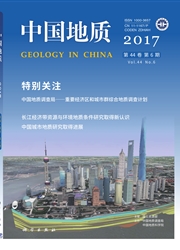

 中文摘要:
中文摘要:
通过露头剖面、钻井岩心、录井剖面、测井曲线及微量元素等多种资料的综合分析,在识别出5种不同成因类型层序界面的基础上。将上三叠统延长组划分为区域上分布稳定的4个长期基准面旋回(LSC1、LSC2、LSC3、LSC4)。在此基础上详细讨论了层序与生储盖组合的关系。指出生储盖组合特征与长期基准面旋回最为密切,有利储层发育位置主要出现在基准面旋回上升半旋回的早中期以及下降半旋回的中晚期,基准面升降转换位置发育的湖相泥、页岩为良好的烃源岩及盖层。
 英文摘要:
英文摘要:
Through a comprehensive analysis of the outcrops, rock cores, well logging and trace element data, five sequence boundaries of different origins are identified, and on that basis, the Upper Triassic Yanchang Formation in the Ordos basin is divided into four long-term base-level cycles (LSC1, LSC2, LSC3 and LSC4) that are persistent on a regional scale. Then the relationship between the source-reservoir-cap associations and the baselevel cyclic sequences of the formation is discussed in detail and it is pointed out that the long-term base-level cycles bear close relation to the source-reservoir-cap rock association. The main reservoir sand bodies occur in the early and middle stages of the ascending half cycle and the middle and late stages of the descending half cycle of the long-term base-level cycle, and lacustrine mudstone and shale developed at positions of ascending and descending transition of the long-term base-level cycle are good hydrocarbon source rocks and cap rocks.
 同期刊论文项目
同期刊论文项目
 同项目期刊论文
同项目期刊论文
 期刊信息
期刊信息
